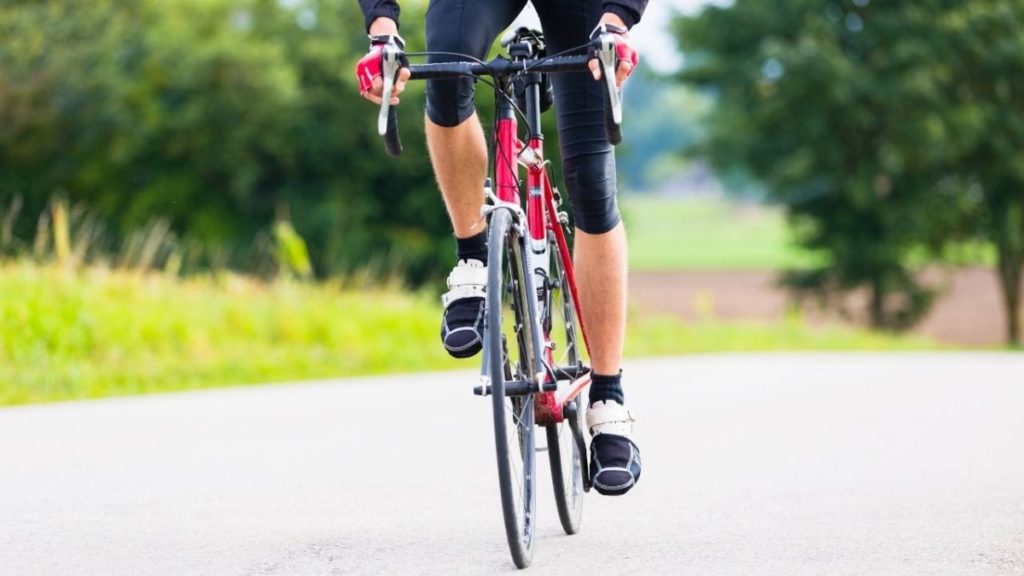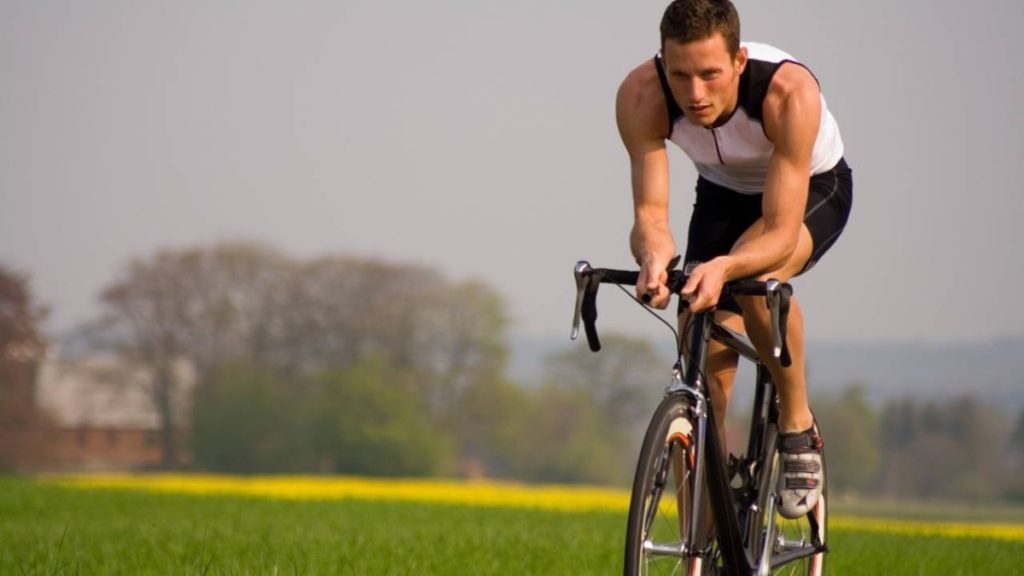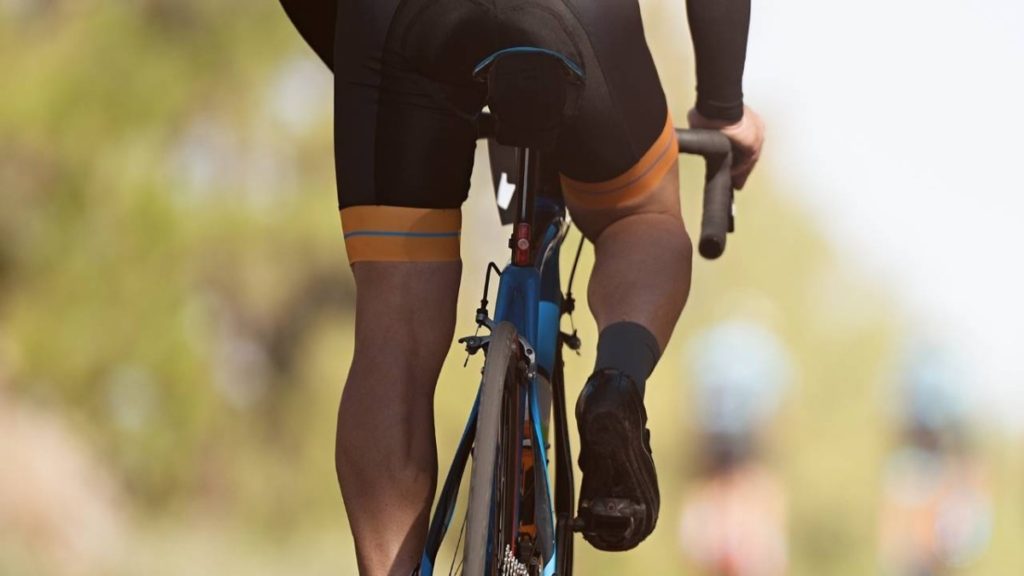
Cycling is a great way to lose weight. It’s an aerobic exercise, which means it raises your heart rate and helps you burn calories. Cycling also builds muscle, so you get the dual benefit of losing weight and toning up. And because cycling is low-impact, it’s easy on your joints, making it a great exercise for people who are looking to drop some kilograms.
On average, if you cycle your bike at a moderate pace (12mph/19kph) you would burn approximately 688 calories each hour. It takes around 77,000 calories to burn 10kg of body weight. Therefore, you would need to complete 110 hours of cycling to burn 10kg of weight.
Table of Contents
Best Way to Burn 10kg From Cycling

It would be an average of 4 hours 40 minutes of cycling for 30 days to burn 10kg in a month but that’s a very ambitious target. A more realistic goal would be to aim to lose 10kg in 16 weeks making your daily average 1 hour of cycling every day. You could add two rest days each week meaning you would need to cycle 1 hour 25 minutes for 5 days.
I would consider this a healthier and more stainable goal because it will be easier to maintain and you will have the motivation to continue after weeks of cycling. Similarly, you can combine your cycling with a mixture of indoor and outdoor cycling. If your short on time reduce the minutes cycling and make the hours up on a longer ride once or twice a week.
Ultimately the amount of weight you lose depends on your fitness level, age, weight, gender and how hard you cycle. The type of bike you use also has an impact because outdoor cycling is more difficult than indoor. The type of bike has an effect because road bikes are 10-15% faster than mountain bikes. But there is nothing wrong with using a combination of bikes to achieve your weight loss goal.

How Much Cycling to Lose 10kg by Weight
Let’s analyse how many hours of cycling you would need to complete to lose 10kg for your weight. Similarly, your intensity level has a significant impact on the number of calories you burn, so I’ve included cycling at;
- Steady riding pace – 10mph/16mph
- Moderate pace – 12mph/19kph
- Vigorous intensity – 14mph/22kph
Body Weight: 160-180lbs (72-81kg)
On average, if you weigh between 160-180lbs (72-81kg) and cycle at a moderate pace, you would need to cycle 126 hours to burn 10kg of body weight.
| Intensity Level | Calories Burned (per hour) | Hours to lose 10kg |
| Light | 462 | 166 |
| Moderate | 616 | 126 |
| Vigorous | 770 | 100 |
Body Weight: 180-200lbs (81-90kg)
On average, if you weigh between 180-200lbs (81-90kg) and cycle at a moderate pace, you would need to cycle 110 hours to burn 10kg of body weight.
| Intensity Level | Calories Burned | Hours to lose 10kg |
| Light | 516 | 148 |
| Moderate | 688 | 110 |
| Vigorous | 860 | 88 |
Body Weight: 200-220lbs (90-99kg)
On average, if you weigh between 200-220lbs (90-99kg) and cycle at a moderate pace, you would need to cycle 100 hours to burn 10kg of body weight.
| Intensity Level | Calories Burned | Hours to lose 10kg |
| Light | 570 | 134 |
| Moderate | 760 | 100 |
| Vigorous | 950 | 80 |
Body Weight: 220-240lbs (99-108kg)
On average, if you weigh between 220-240lbs (99-108kg) and cycle at a moderate pace, you would need to cycle 90 hours to burn 10kg of body weight.
| Intensity Level | Calories Burned | Hours to lose 10kg |
| Light | 630 | 122 |
| Moderate | 840 | 90 |
| Vigorous | 1050 | 72 |
Body Weight: 240-260lbs (108-117kg)
On average, if you weigh between 240-260lbs (108-117kg) and cycle at a moderate pace, you would need to cycle 84 hours to burn 10kg of body weight.
| Intensity Level | Calories Burned | Hours to lose 10kg |
| Light | 684 | 112 |
| Moderate | 912 | 84 |
| Vigorous | 1140 | 66 |
Body Weight: 260-280lbs (117-127kg)
On average, if you weigh between 260-280lbs (117-127kg) and cycle at a moderate pace, you would need to cycle 80 hours to burn 10kg of body weight.
| Intensity Level | Calories Burned | Hours to lose 10kg |
| Light | 738 | 104 |
| Moderate | 948 | 80 |
| Vigorous | 1230 | 62 |
Other Cycling Articles you Might Find Helpful

Tips to Lose 10kg Faster
1. Ride a Maximum of 1 Hour a Day
This way, you won’t overstress your body, and you’ll be able to maintain the intensity and avoid injury. Riding for one hour 5 times a week for 11 weeks will give you the result you desire without putting too much stress on your body. A cycling routine like this can be done by beginners and individuals that are overweight and gives the best results.
2. Calorie Deficit Diet
This will help you lose weight faster while still being able to maintain your workout intensity. If you want to lose 5kg, then you need to create a calorie deficit of around 500 calories a day. This means you don’t have to cycle for 55 hours and half your time on the bike to around 27 hours. However, don’t recuse your calories by more than 500 calories every day, or you won’t have the energy to complete your bike ride.

3. Increase your Intensity
The faster you go, the more calories you will burn, is the theory. You won’t ride at a heart rate of around 135bpm – 165bpm, sometimes increasing it to your max heart rate. Riding at a low heart rate of 135bpm means you will take longer to burn calories. However, it can be challenging to maintain a high speed for long distances and multiple days. So listen to your body and don’t overtrain.
4. Ride Uphill
If your bike is outdoors, don’t avoid hills. Embrace them because they will help to increase your heart rate and burn more calories. It will increase your calorie expenditure by 25% or more, depending on how steep the hill is. I always include hills in my cycling sessions, usually in the middle of the ride. If you feel fatigued, then ride on the flats.
5. Use intervals Training
Alternate between high and low-intensity periods to increase your heart rate and burn more calories. Interval training has been proven to burn 40% more calories than steady-state cycling. But only use interval training three times a week with a day of rest in-between. I find HITT training is easier on an indoor exercise bike or spin bike. When you ride outside, it’s not always possible to do intervals successfully.

6. Add resistance
If you are riding on a stationary bike, add resistance to make it more challenging and get your legs and heart working. Resistance is the thing that increases your workout rate and burns calories. By adding resistance, you are making it harder for your legs to move the pedals. If you don’t have enough resistance, then your workout will be easy, and you won’t burn as many calories.
7. Increase your Time Weekly
Once you get into regular cycling, you will very quickly be able to increase your time on the bike. Suppose you have a busy home and work schedule. Plan to have a long bike ride at the weekend. This will increase your time on the bike and calories burned. A great long-distance bike ride is between 1 and 2 hours. Similarly, add 5 minutes to daily rides every week, and by week 6, you will be cycling 1 hour 25 minutes, getting you closer to your goal.



